Content
- 1 Red currant varieties for central and central Russia
- 2 Early ripening varieties
- 3 The largest varieties
- 4 Winter hardy varieties
- 5 The best varieties of red currants for the Moscow region
- 6 The best varieties of red currant
- 7 The best varieties of red currants for the Moscow region
- 8 The best varieties of red currant for Siberia and the Urals
- 9 Currant varieties
- 10 Red and white currants
- 11 Red currant: varieties
- 12 Large-fruited red currant
- 13 White currant: varieties
- 14 Red currant: benefits
- 15 Red currant harm
- 16 Black currant
- 17 Black currant: varieties
- 18 Large-fruited black currant
- 19 Useful properties of black currant
- 20 Diseases of the currant
- 21 Currant pests
Many gardeners grow red currants on their site. This berry has a pleasant taste and many beneficial properties.... Most often, bright fruits are processed, but there are also large-fruited varieties that are perfect for fresh consumption, for example, Ilyinka or Alpha. The best varieties for the central region are considered Roseta, Rondom, Natali and Gollandskaya krasnaya, but the most winter-hardy variety is Uralskaya krasavitsa.
Red currant varieties for central and central Russia
The main indicator that the red currant variety is suitable for the middle lane is its resistance to frost and drought. The changeable climate of the central region allows only strong plants to be grown. As for the taste, size and other characteristics of the berries, each gardener chooses for himself individually. The best representatives of the varieties in this category are:
Darling
 Red currant variety Beloved
Red currant variety Beloved
The variety is the result of the work of Belarusian breeders. A medium-sized shrub with a rounded, not dense crown. Berries are light red, small in size, weighing up to 0.5 grams... Also, the variety is distinguished by high yields and self-fertility, tolerates frosts well, fruits tolerate transportation well. The downside is susceptibility to fungal diseases.
Roland
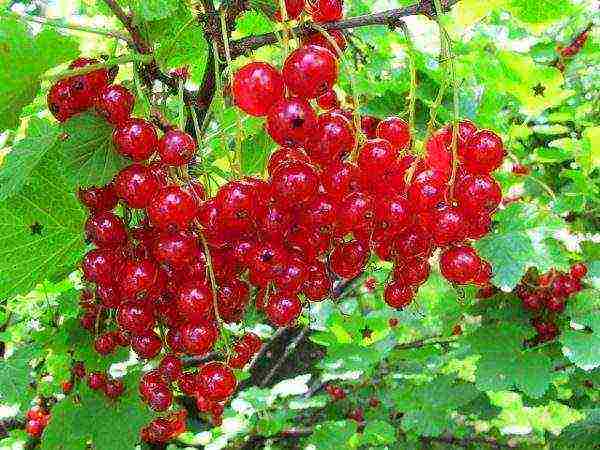 Red currant grade Roland
Red currant grade Roland
Dutch variety, medium-sized shrub with thick shoots, tolerates frost well and brings 6-7 kilograms of harvest... The berries are scarlet, weighing from 0.7 to 1.5 grams. Suitable for processing, and when overripe, it is used for fresh consumption. The taste is sour. Roland is not susceptible to fungal diseases, but there is a threat of attack by currant kidney mites.
Red Cross
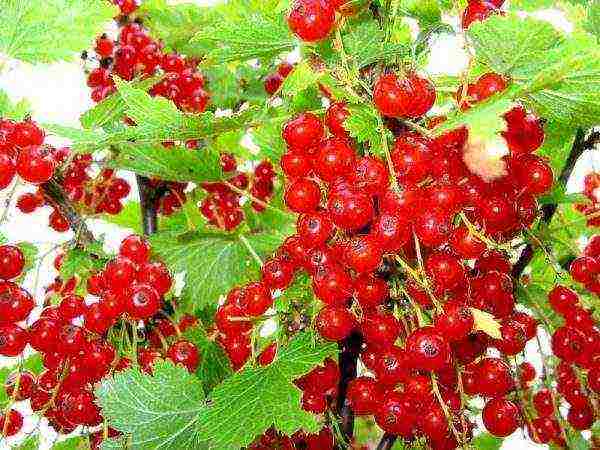 Currant grade Red cross
Currant grade Red cross
This type of currant was bred in the United States. Shrub of medium height with a wide, spreading crown. The berries are small, their weight is 0.5 grams... The color of the flesh is red, but the skin is transparent. The variety is distinguished by self-fertility and winter hardiness, and is immune to many diseases.
Early ripening varieties
The harvest from shrubs belonging to the early ripening period can be harvested already at the end of June... This indicator attracts the attention of many gardeners who want to eat fresh berries as early as possible. The following varieties are considered the most popular:
Jonker van Tets
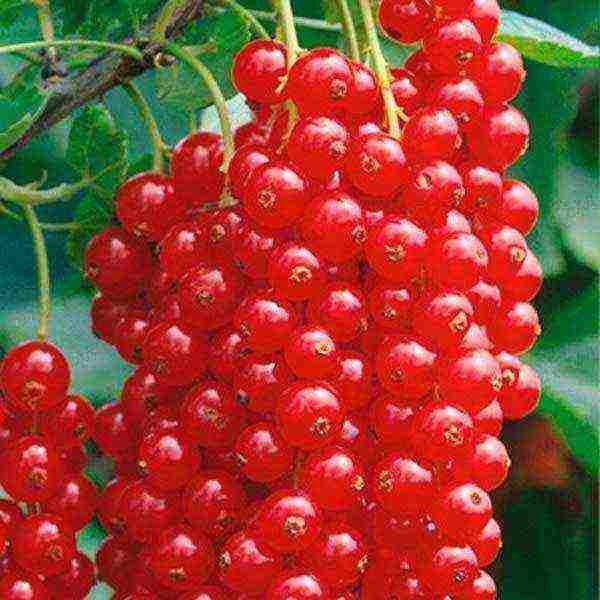 Red currant grade Jonker van Tets
Red currant grade Jonker van Tets
One of the oldest varieties, it was bred in Holland in 1941 and to this day attracts the attention of many gardeners. The bush is tall with many branches. The berries of such a plant are medium in size, up to 0.7 grams, with a delicate, sweet and sour taste... The fruits ripen early. Also, the variety has a good and stable yield and relative self-fertility. Best of all, the shrub adapts to the conditions of the central region. Such currants are not afraid of winter cold and have a good immunity to powdery mildew and anthracnose.
Early sweet
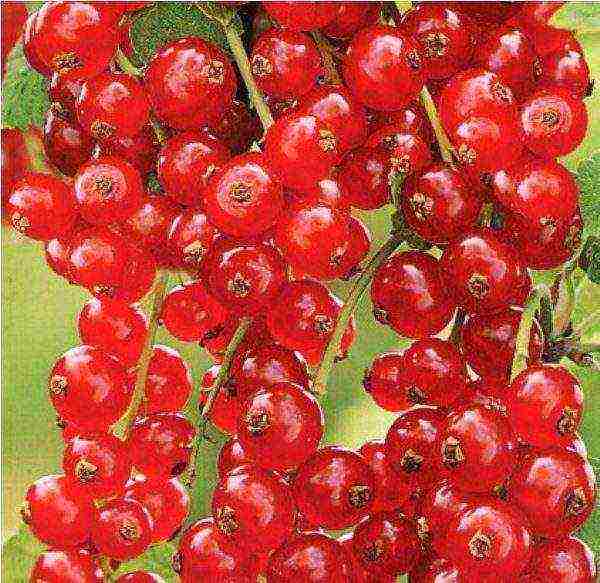 Red currant variety Early sweet
Red currant variety Early sweet
Early ripening variety. A medium-sized shrub with a thin, neat crown. Berries are large enough, in terms of their weight, they can reach 0.9 grams... The skin color is dark red, the pulp has a pleasant taste, and is sour. It is appreciated for its high resistance to frost and drought.
Cherry Viksne
 Currant Cherry Viksne
Currant Cherry Viksne
This variety is very often used commercially. Latvia is considered the birthplace of breeding, therefore in Russia it is customary to grow it in the European part. Small shrubs annually bring a bountiful harvest of medium-weight berries (0.8 grams)... The color of the currant is bright red, it also has good transportability and a long shelf life. Resistant to frost, drought and anthracnose.
Chulkovskaya
 Red currant grade Chulkovskaya
Red currant grade Chulkovskaya
In Russia, this variety has been cultivated since 1947. The shrub is tall, the crown is compact and neat, it has good self-fertility and does not need pollinators. On average, one berry weighs 0.7 grams, the taste is pleasant, but best suited for various types of processing... Resistance to frost, diseases and insects is average. But at the same time, the variety tolerates the absence of precipitation and dry weather well.
The largest varieties
Usually, red currants are used to make stewed fruit, juices, preserves and other processed products. But large-fruited varieties are suitable for fresh consumption, because they have excellent taste:
Ilyinka
 Red currant grade Ilyinka
Red currant grade Ilyinka
It is a medium-sized shrub with a bountiful and annual harvest. The fruits ripen in the middle of summer and have a very large weight, which can reach 1.6 grams.... The peel of the berries is dark red, almost burgundy in color, the taste is at the highest level. In addition, the variety perfectly tolerates winter frosts, is not exposed to most diseases and pests.
Asora
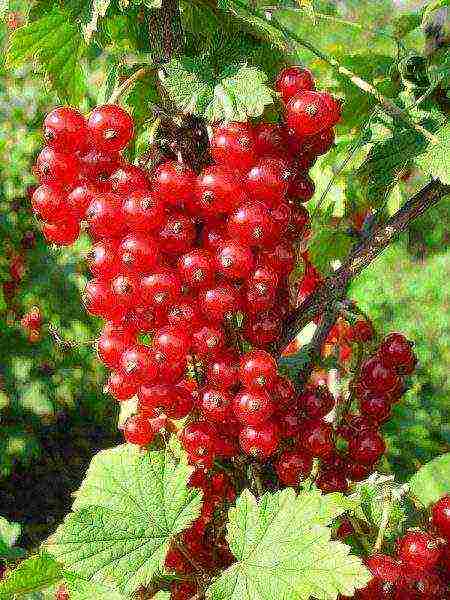 Red currant Asora grade
Red currant Asora grade
Shrub of medium height with powerful, spreading branches. A variety of late ripening, fruits of a rich maroon color, weighing up to 1 gram... Asora is not afraid of moderate cold weather, is not susceptible to various diseases and attacks of pests.
Alpha
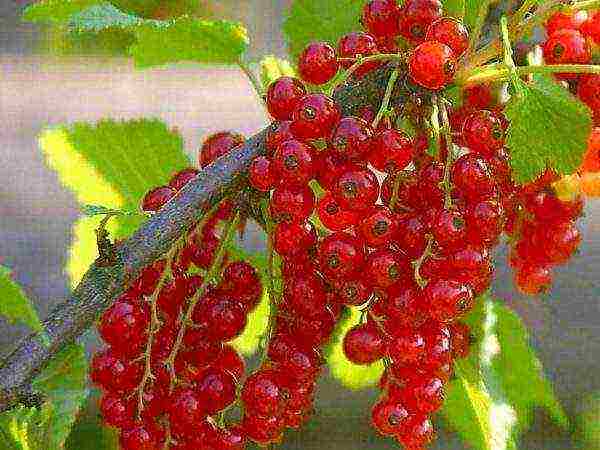 Red currant grade Alpha
Red currant grade Alpha
This variety appeared on the garden market relatively recently, but has already managed to win the attention of many summer residents. A medium-sized bush produces a stable and high yield. Berries of a light red hue and with a sweet taste can reach up to 1.5 grams in weight... Also, the variety is self-fertile, is not afraid of severe cold weather and is not susceptible to the appearance of powdery mildew.
Baraba
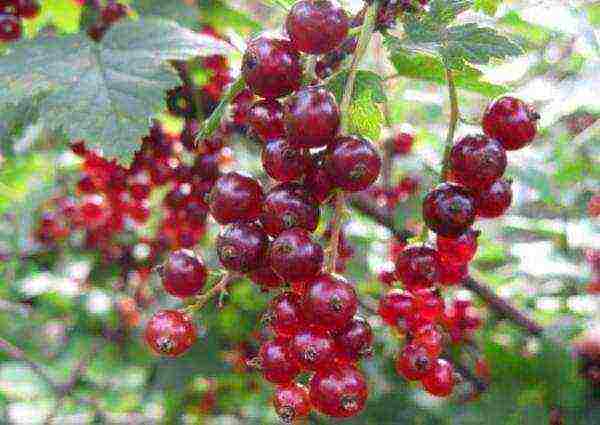 Red currant variety Baraba
Red currant variety Baraba
The medium-ripening variety is a short, compact shrub that produces a good harvest every year. Deep red berries, on average, weigh 1.5 grams... The variety has high frost resistance and is not affected by drought. The only drawback is susceptibility to anthracnose.
Winter hardy varieties
Gardeners living in areas with a harsh climate also grow red currants on their plots. AND to get a good harvest and maintain the viability of the shrub, it is necessary to choose the right variety, which will be characterized by high winter hardiness:
Ural beauty
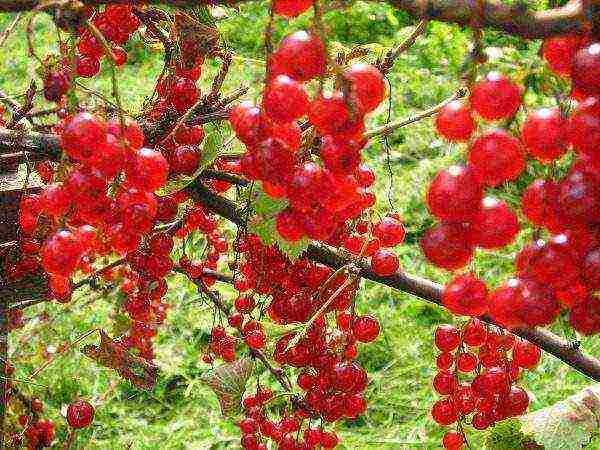 Red currant grade Ural beauty
Red currant grade Ural beauty
One of the most frost-resistant varieties, a low shrub with a powerful, branched crown gives annual and bountiful harvests. Large berries (1.7 grams) have a pleasant sweet taste and aroma... The Ural beauty does not need additional pollination, is not susceptible to the appearance of diseases and pests.
Ural fires
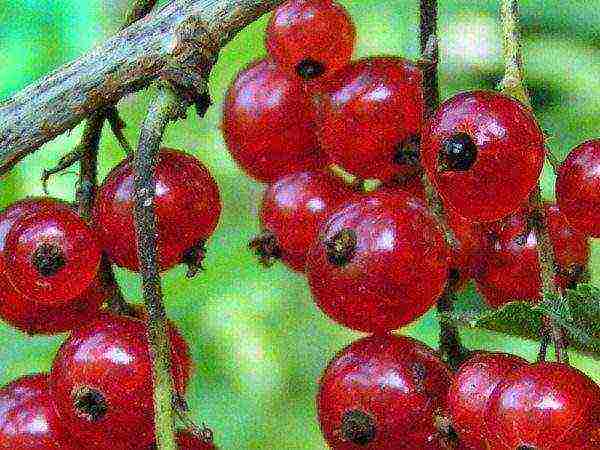 Red currant grade Fires of the Urals
Red currant grade Fires of the Urals
This variety was bred relatively recently, in 2000. A tall shrub with powerful, dense branches, it tolerates frost well and is partially self-fertile. Medium-sized berries (0.5 - 0.7 grams), the skin is bright red, the flesh is sweet, with a slight sourness... In addition to all the other advantages, such a shrub is immune to many fungal diseases.
Scarlet dawn
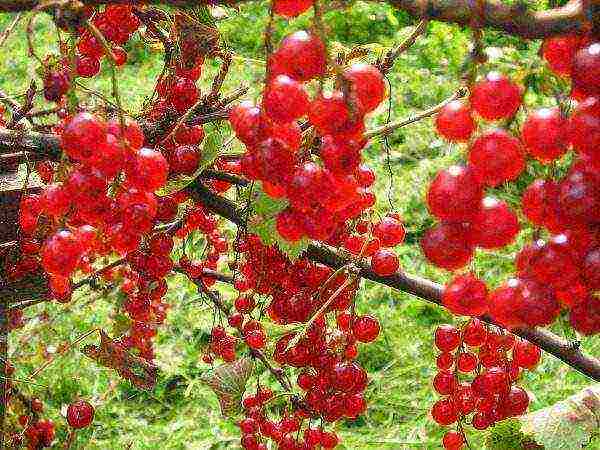 Red currant grade Scarlet Dawn
Red currant grade Scarlet Dawn
A medium-sized shrub with a rectangular, even crown. Fruits ripen in medium terms, and are red berries weighing up to 1 gram... The taste of the pulp is sweet and sour; such currants are well suited both for processing and for fresh consumption. The variety is fruitful, self-fertile, not affected by many diseases and has a high winter hardiness.
The best varieties of red currants for the Moscow region
For the Moscow region, the same varieties may be suitable as for the central region... The most popular are the red currants Rondom and Natali, these varieties have the largest and most delicious berries.
Rondome
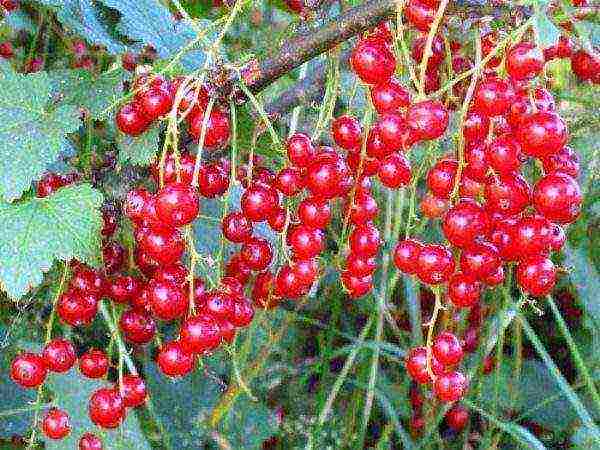 Red currant grade Rondom
Red currant grade Rondom
The variety was developed by Dutch breeders. High shrub, branched with powerful shoots, fruit ripening occurs at a later date... The yield is not very high, but stable. Berries differ from other varieties in their high content of vitamin C, they also do not crumble after full ripening. Dark red currant weighing up to 0.9 grams suitable for fresh consumption and for processing. Rondome is perfect for growing in the central region of the country.
Natalie
 Red currant grade Natali
Red currant grade Natali
The variety is suitable for cultivation in the southern and central regions of Russia. Represents low, neat shrub, bearing large (up to 1 gram) burgundy fruits and medium ripening... The taste of the pulp is sweet and sour. The variety has a relatively high winter hardiness and good resistance to diseases and pests.
Dutch red
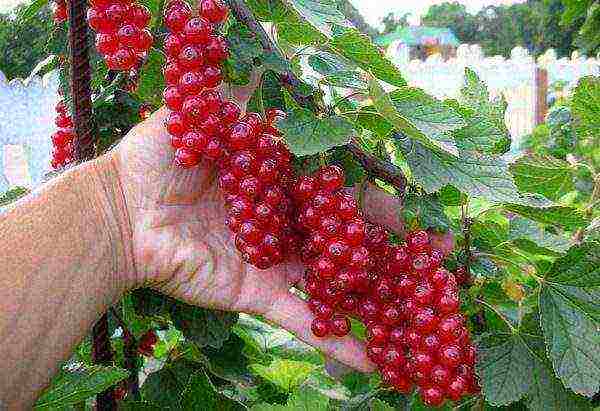 Currant variety Dutch red
Currant variety Dutch red
One of the oldest varieties grown in Europe. The shrub is high, with a rectangular crown. The fruits ripen in early August, are medium in size and have a pleasant sour taste.... Such berries are most often used for various types of processing. Holland red, like pink, tolerates drought well, but yields increase with abundant watering. It is resistant to disease.
Rosetta
 Red currant variety Rosetta
Red currant variety Rosetta
A tall shrub with strong, straight-growing branches, fast and vigorous growth. The berries ripen at the end of July, have a large size and a pleasant sour taste.... Fruits for universal use, ripen on long clusters, up to 12 centimeters long. The variety is distinguished by strong growth, photophilousness and poor tolerance of excessive moisture.
Red currants can be found in almost any garden area, and it is not for nothing that this berry is so popular. There are a huge number of varieties, so everyone can choose the most suitable specimen for themselves.
 Red currant is a beloved by many, a promising crop with a stable annual yield, rare unpretentiousness, and high taste. The average yield of the best varieties of red currants is almost two times higher than that of raspberries and black currants, and an order of magnitude higher than that of gooseberries and strawberries. Its berries contain vitamin C, amino acids, P-active compounds and coumarins. This type of currant entered the culture much earlier than black currant and worthy to this day takes its rightful place in it.
Red currant is a beloved by many, a promising crop with a stable annual yield, rare unpretentiousness, and high taste. The average yield of the best varieties of red currants is almost two times higher than that of raspberries and black currants, and an order of magnitude higher than that of gooseberries and strawberries. Its berries contain vitamin C, amino acids, P-active compounds and coumarins. This type of currant entered the culture much earlier than black currant and worthy to this day takes its rightful place in it.
Red currants are popular in many countries around the world. It is grown in the USA, England, Iceland, Germany, Czech Republic, Poland, Slovakia, Estonia, Latvia, the Netherlands and not only in private gardens, but also as an industrial culture.
In Russia, red currants occupy an insignificant part of the area. The planting areas of this shrub in the Urals and Siberia are also small. Nevertheless, its high technological and taste indicators put red currants in one of the first places with first-class horticultural crops.
Red currant occupies the vastness from the European part of Russia to the Kola Peninsula and Siberia. Calmly reacts to heat, moisture, frost. High frost and drought resistance combined with shatter resistance. Resists strong winds. It is undemanding to the characteristics of the soil, but prefers chernozems, loamy and heavy loamy soils.
The best varieties of red currant
A large number of varieties of this type of currant have a remarkable ability to set berries with their own pollen. This is also one of the reasons for its unique popularity. She does not need the presence of insects that produce pollination, this culture is self-fertile, which allows her to hold the lead in the eastern regions of the country.
- The largest red currant berries can be observed in varieties such as:
Ural beauty, Rondom, Ilyinka, Ob sunset, Viksne, Asora. - Red currant varieties have the best taste:
Ural souvenir, Meat red, Early sweet. - The highest content of vitamin C can be found in berries of the currant variety:
Chulkovskaya, Vika, Gazelle, Zarya Zapolyarya, Niva, Osipovskaya, Rote Shpetlese, Ustina. - The sugar content is mostly in red currant varieties:
Houghton Castle, Red Cross, Svetlana, Red Meat. - Of no small importance for the technological characteristics, transportability is the sign of fruit breaking during collection. Such abilities are observed in currant varieties:
Star of the North, Long-leaved small, Laturnais, Dutch red. - The following varieties have a high degree of winter hardiness:
Ural Dawns Glory Sablon,, Reibi Castle, Ural beauty, Chulkovskaya, Dawn, Melody, Ural Lights, Scarlet Dawn, Night.
Considering all the varieties of red currants considered above, the best of them, undoubtedly, can be called:
Viksne is the best red currant variety in terms of its taste and rich deep cherry color. Winter-hardy and heat-resistant variety, disease resistant.
"Gollandskaya krasnaya" is a winter-hardy variety that is notable for its unpretentiousness. Has compact and powerful bushes. Possesses good resistance to fungal diseases.
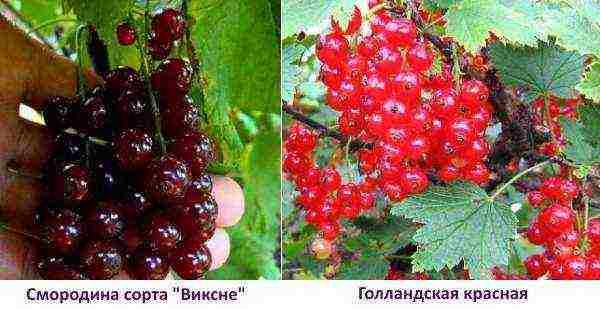
"Cascade" is a large-fruited variety of currants, has a brush 10 cm long. It is a frost-resistant variety, resistant to fungal infections. Very productive.
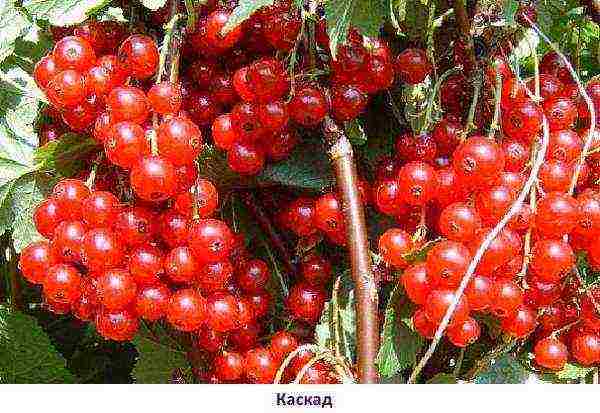
Uralskaya krasavitsa is an excellent variety. It has a dessert taste and large fruits. Early ripening currant, hardy. High productivity and self-fertility.
"Serpentine" is a large-fruited fruitful variety. Medium-sized, compact bush. Highly winter-resistant. The fruit has a wonderful taste with a pleasant aroma.
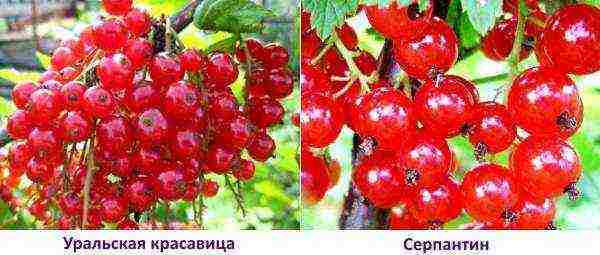
The best varieties of red currant for the Moscow region
Red currants in the Moscow region usually bloom in May. The early varieties ripen in June, the late ones in August.
For planting red currants in the specified region, such varieties are recommended as:
- Early sweet;
- Jonker van Tete;
- Rachnovskaya;
- Natalie.
"Early Sweet" is a fruitful bush that yields up to 4 kg of fruit. On a long brush, the berries are small, but tasty, do not crumble.
“Jonker van Tete” is the best of the red currant varieties, a compact tall bush that produces up to 6 kg of berries. The berries are tasty and large. Well known for its winter hardiness.

"Rachnovskaya" is a slightly spreading, medium-sized bush that yields up to 5 kg of calibrated juicy and tasty berries.
Natalie is a compact, dense bush. Productivity up to 12 kg. The berries are deep red in color, aromatic and tasty. Medium resistant to fungal diseases.

The best varieties of red currants for Siberia and the Urals
The harsh climatic conditions of Western and Eastern Siberia and the Urals have a huge impact on horticultural crops. In winter, in these regions, the temperature drops to 45 ° C, and return frosts can ruin the harvest even during flowering.
Red currant adequately overcomes these cataclysms of nature and emerges victorious from them. There are many varieties that yield good yields in Siberia and the Urals.
The best varieties of red currants for the Urals and Siberia are the following:
- Chulkovskaya;
- Dutch pink;
- Darling;
- Ural souvenir;
- Lights of the Urals.
Chulkovskaya - early red currant. Slightly spreading, vigorous, with bright red fruits from an exquisite dessert taste. High urozhnost up to 10 kg per bush. very winter hardy.
Beloved is a very popular variety. Semi-spreading, medium-sized shrub. Berries with a sweet and sour taste. Differs in excellent productivity and winter hardiness.
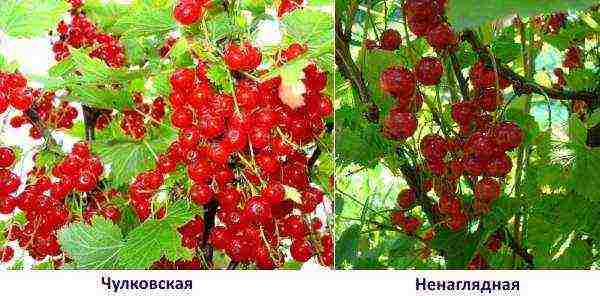
Dutch rose is a favorite variety of gardeners. Tall shrub, but compact enough. Fruits are large in size, pink in color with an excellent dessert taste. Excellent yield, cold-resistant.
The Ural souvenir is a wonderful winter-hardy variety. The berries of this variety are juicy, bright red, the taste has a sweet and sour tint. The bush is medium-sized and medium-spreading.
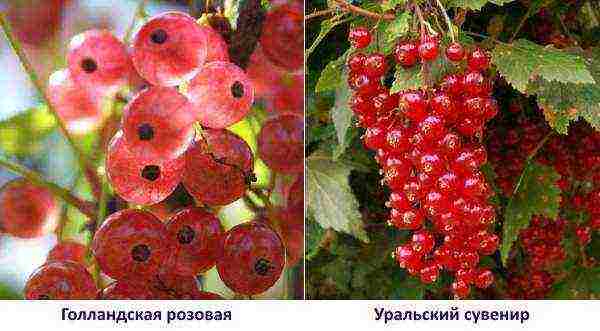
Ural Fire is a very winter-hardy variety with medium-sized berries. The flowers and ovary are resistant to spring frosts, and the plant has good resistance to pests and diseases.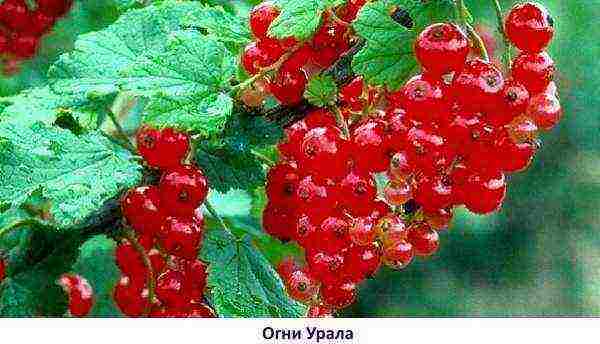
Red currant varieties - video
Currants are a favorite garden berry. In our country, it is grown everywhere. This culture has gained popularity due to its taste, nutritional and medicinal properties. Breeders have bred thousands of varieties of different currant colors. Each of them has its own characteristics.
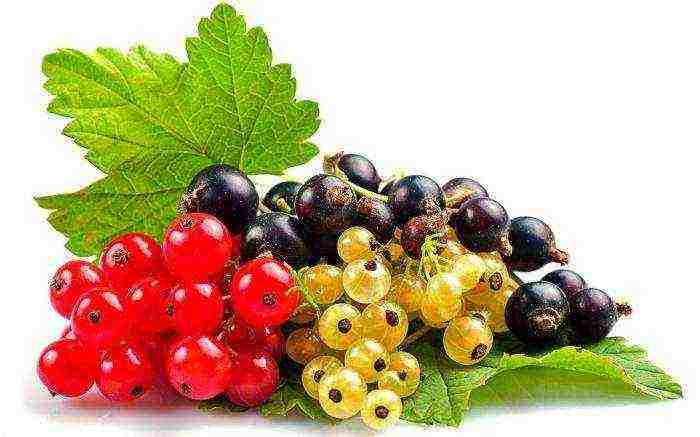
Currant varieties
Currants, like other crops, come in different varieties. Each of them has its own specific shape, size, color of berries, pulp consistency, taste, aroma and much more.
Currant varieties differ from one another in the size of the fruit clusters and the density of the berries on them. And different periods of ripening allow you to increase the period of consumption of fresh berries.
Red and white currants
Usually currants of these two flowers are considered as one crop, since the berries differ only in color. Red currants were known as early as the 5th century. It was grown by the Dutch for beauty. First of all, its decorative qualities were appreciated, the berries were of no interest. The red currant has become very popular in Europe. In Russia, this culture became familiar only in the 15th century.
White currant became known much later. At the beginning of the last century, it was considered one of the varieties of red currant with an atypical berry color for this species. These two varieties do not have a pronounced aroma, but differ in taste and useful properties. The best varieties of white and red currants are unpretentious to growing conditions, but they feel better on loamy and sandy loam soils. These are very light-loving plants, undemanding to moisture. It should be remembered that with a lack of lighting, the berries lose their taste and color. The culture is resistant to disease and damage.
With proper care, these two varieties of currant produce high yields. Bushes covered with red and white berries look very beautiful. Fruit formations of white and red currants are more durable than black ones, the berries are evenly distributed over the bush, they are less thickened by shoots. The plant can bear fruit for 15-20 years, growing without transplanting to another place.
Red currant: varieties
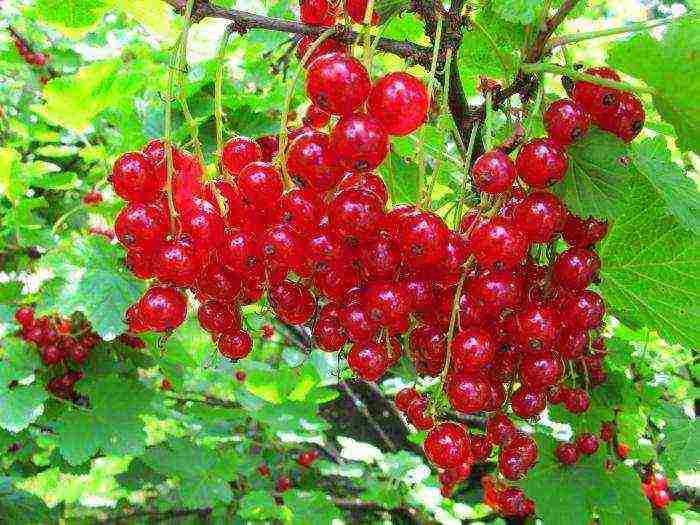
- "Varshevich" is distinguished by the originality of the color of the fruit. They have a pronounced dark purple color. It is a self-fertile variety that ripens late. On a large, powerful bush, many fruits of a round or slightly compressed shape are formed. Medium-sized berries with juicy purple flesh have a sour taste and form a long cluster. Ripe fruits remain on the branches for a long time. For its high yield, unusual fruit color and decorative effect of the bush, this variety of currants is popular with gardeners. Fresh berries are used less often, more often they are processed.
- "Nenaglyadnaya" is a variety that has an average ripening period. The bush is characterized by small size, medium branching and thick, straight stems. The rounded berries are bright and medium in size. There are many of them on the brushes, and they are evenly distributed. The fruits of sweet and sour taste have a universal purpose. This variety is not afraid of severe frosts, it has a high yield and is not affected by powdery mildew.
- A typical representative of a medium-ripe variety of currants, the photo of which you see above, is "Svetlitsa". The bush is medium in size, compact and erect shoots. The rounded berries are not large in size, but very juicy and tasty. This variety, despite its small berries, gives high yields and is not susceptible to fungal diseases.
Large-fruited red currant
- "Chulkovskaya" red currant belongs to an old variety, which even today attracts the attention of amateurs and specialists of this type of culture by its early ripening and taste of the fruit. The red currant variety differs in the small size of the bush. The best varieties include Chulkovskaya currants. Long brushes are strewn with large red berries, round or pear-shaped. They are distinguished by tender, juicy pulp and sweetish taste. Ripe berries, without crumbling, remain on the branches for a long time. This sweet variety of currant consumed fresh or processed.
- Variety "Jonker van tete" has a medium-early ripening period. This Dutch currant variety was bred in early 1941. In our country, it gained popularity in the nineties of the last century for its excellent taste and resistance to disease and damage. This variety gives high yields and is resistant to low temperatures. Differs in a powerful, large, dense bush of red currant varieties. The best varieties include this particular species. On long or medium-sized clusters, you can count up to ten very large, bright berries. The shape of the fruits is round or pear-shaped, they are covered with a dense, elastic skin. The pulp is juicy and very tasty. Therefore, this currant is so fond of eating fresh.
- The large-fruited currant of the "Uralskaya krasavitsa" variety is one of the best varieties of domestic selection. Differs in low spreading bushes and disease resistance. Therefore, the leaves are preserved until the first frost. The culture refers to the early ripening period. The disadvantage is that the yield increases gradually, in direct proportion to the long-term growth of wood. The berries are distinguished by their large size, excellent taste and pleasant aroma.
White currant: varieties
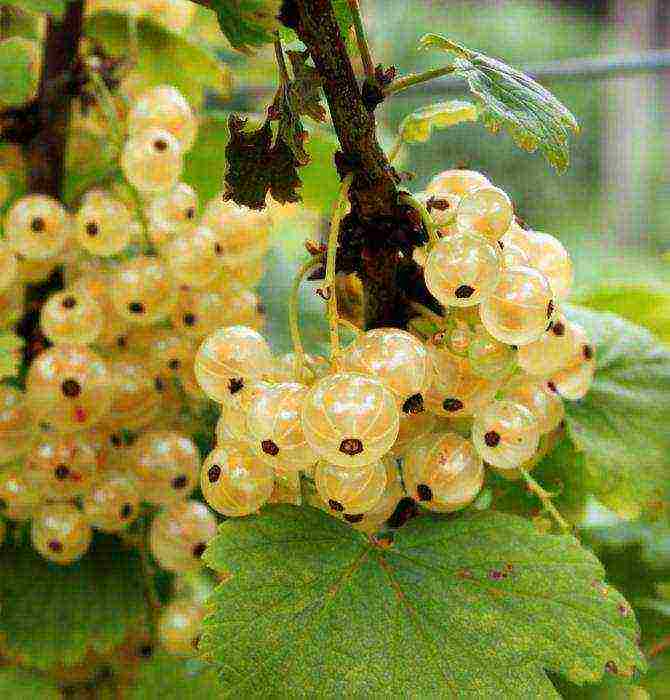
- "Jumping" is a type of white currant and has an average ripening period. The bushes of the plant are distinguished by medium growth vigor, branches are spreading, with a bountiful harvest they sag and fall. On clusters of medium length, there are usually many not very large berries of a light pink color, round in shape. Sweet and sour fruits have a universal purpose. Ripe berries remain on the tassels for a long time, do not crumble. At this time, they intensively acquire taste. White currant of the "jumping" variety is ideal for freezing. This variety bears abundant fruit and has an excellent taste.
- "Dutch" white currant belongs to an old variety, but recently it has been persistently replaced by other, more promising species. Although many gardeners believe that in vain. The bushes of this plant are not very sprawling, compact, which allows them to maximize the use of the area of the site when planting them. This variety of currant bears fruit better in moist, fertile soil, resistant to low temperatures. The berries are medium in size and have a rounded, slightly compressed shape. Their skin is transparent. Seeds and veins on the surface are clearly visible. The pulp is juicy and delicious. Ripe berries do not crumble, they are harvested in one step. This currant is good fresh. But its processing will not affect the taste.
- The versailles white currant is well known to gardeners who breed it on their plots. It is attractive for its high yields and tasty, large-sized berries. Its bushes are compact and medium in size. This currant gives high yields, growing on fertile soils. It tolerates frost well. According to the ripening time, it belongs to the middle varieties. Large berries are light cream in color and rounded. In the process of growth, they hardly change in size. Their skin is transparent, seeds and veins are visible through it. The pulp is very juicy, sugar and acid are harmoniously combined in it, which gives the fruit a refreshing taste. The berry is especially good when fresh. In addition, jams, compotes, juices, syrups, jams and much more are made from it.
Red currant: benefits
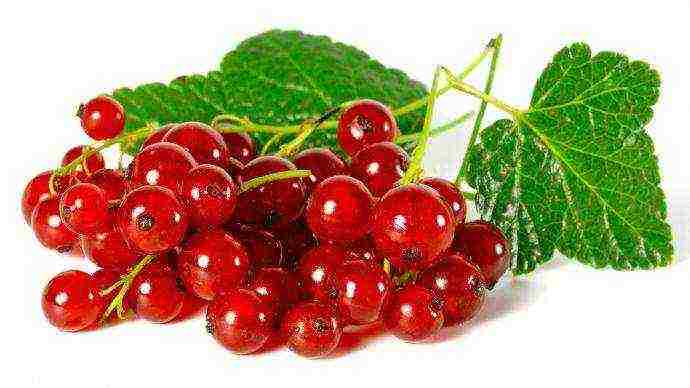
Red currant berries are rich in potassium, iron, succinic and malic acids. They contain pectin and carotene. The use of berries helps to remove excess fluid from the body, serves as a prevention of heart and vascular diseases.
Red currant fruits are used in the treatment of diabetes mellitus. They eliminate nausea and stimulate appetite. They are used as a diuretic, anti-inflammatory, hematopoietic, laxative and tonic. The use of malic and succinic acids contained in berries energizes the body. Therefore, it is recommended to use them for elderly people. Red currant juice maintains the tone of the body at the proper level.
Red currant harm
The benefits of red currants are obvious and indisputable. But with some diseases, it can be harmful. In this case, it must be excluded from the diet. Drinking juice is categorically contraindicated for people suffering from stomach ulcers, hepatitis, gastritis and low blood clotting.
Black currant
The name of this type of culture comes from the word "currant", which in translation from Old Russian means "persistent smell" characteristic of this species. The black currant is to the liking of gardeners, and its delicious berries have long been loved by children and adults. Description of currant varieties provides a wide choice of culture. After all, this plant is characterized by resistance to low temperatures and fungal diseases. Black currant is a fast-growing, high-yielding crop with annual fruiting. It does not have great requirements for growing conditions. And its berries have excellent taste and healing properties.
Black currant: varieties

- The Little Prince is an early variety. It features a low bush and its convenient shape, which simplifies harvesting. It is resistant to all diseases, severe frosts and prolonged drought. Bears fruit regularly and abundantly. The berries on the tassels are densely arranged and ripen at the same time. This makes them easier to collect. Brushes are small in size, there are paired and single. The berries are juicy, bright black in color, covered with a thin delicate skin. Lovers of sweet and sour fruits will love them.
- "Openwork" black currant is a highly self-fertile variety. It is frost resistant. He is not afraid of abrupt weather changes.The intense heat does not oppress him. It bears fruit regularly and has a consistently average yield. This culture is resistant to powdery mildew and anthracnose diseases. But sometimes it is affected by kidney mites. Curved thick tassels are short to medium in size. The rounded berries are large, shiny and have a sweet, sour taste. If you choose which varieties of currants are better, you can stop there.
- "Bagheera" belongs to a late variety and is distinguished by high frost resistance and abundant harvests. There is a slight freezing of shoots if frost and thaw often alternate. This variety is not damaged by terry and anthracnose, but powdery mildew can sometimes harm the plant. Fruits are evenly distributed on thin small branches. The berries are of the same size and have a pronounced black color. The shiny, thin skin is very tough. The fruits have a delicate aroma and sweet taste.
Large-fruited black currant
- "Exotic" is the largest-fruited variety of black currant. Differs in high yield and early ripening. The bush is powerful, vigorous, erect branches, strong. Do not bend from the weight of large berries, which form a brush evenly. The fruits are juicy and have a pleasant sweetish taste. The best varieties of black currant are represented by this type of culture.
- "Aleander" refers to varieties of large-fruited black currant. Differs in a tall, spreading bush and branches lying under it. The leaves are dark green, strong and slightly wrinkled. The plant is resistant to powdery mildew and anthracnose, but prone to kidney mite damage. The culture of this variety of currants tolerates the harsh winter months well, but drought is not a comfortable condition for its growth and abundant fruiting. There are many large berries on long, thick, arched clusters. They have a pleasant taste and fragrant aroma.
- "Selechenskaya-2" is one of the best varieties of black currant. Tall, compact bushes have many strong branches that do not need a garter. This variety is not afraid of fungal and tick-borne diseases. Very rarely, it is affected by a kidney mite. This is a versatile variety that tolerates severe frosts and prolonged heat. Strong, curved clusters have many very large gooseberry-like berries. The fruits are covered with a firm, thick skin. They are not torn during harvest. The berries are tasty, sweet, and have a peculiar delicate aroma.
Useful properties of black currant
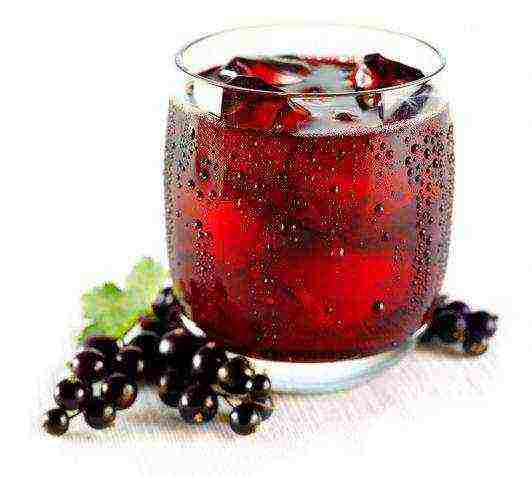
The description of the varieties of currants will not be complete, if not to say about their benefits. Black currant is the healthiest berry in existence. It is called the pantry of substances necessary for a person. It has an excellent taste and is appreciated for its high healing properties. The berry contains a large amount of ascorbic acid, carotene and biotin, which is called the vitamin of youth.
Black currant has long been widely used in folk medicine. The content of iron, potassium and magnesium allows the use of fruits and leaves for anemia, vascular and heart diseases. Black currant is rich in pectins, phytoncides, essential and tannins.
The berry of this variety of currants lowers cholesterol levels, treats eczema and skin diseases, helps with depression and stress. Ulcers and gastritis are treated with flowers and young leaves of black currant, and rheumatism and kidneys are treated with berries. Currently, there are thousands of recipes for various diseases based on black currant.
Diseases of the currant
Currants, like other plants, are affected by diseases and damaged by pests. If you plant the best varieties of currants on your site, you can avoid infection with many infectious diseases. But you need to know the most common ones.
- Anthracnose is a disease of leaves, their petioles, stalks and fruits. It affects plants starting in May. It is characterized by the appearance of small brown spots, which grow over time.The leaves begin to turn yellow, curl and fall off. Shoots slow down growth and do not have time to ripen. To prevent disease in early spring and late autumn, you should dig up the ground around the bush. And before the buds bloom, spray with a solution of vitriol. You can apply Bordeaux liquid. It is sprayed four times during the growing season: during the budding period, at the end of flowering, half a month after flowering, after harvesting.
- Terry is a viral disease and therefore can spread quickly. Carriers are bed bugs, kidney mites and aphids. This disease is characterized by a change in the shape and color of leaves and flowers. The plant stops bearing fruit. To combat the disease, branches are cut or the entire bush is removed. The main thing is to fight the spread of the disease.
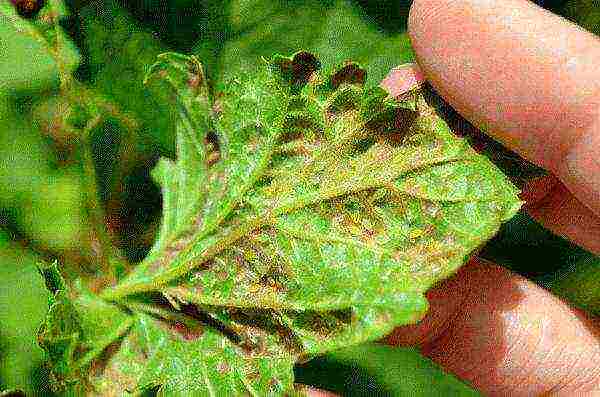
Currant pests
- The kidney mite is very small and can only be seen through a magnifying glass or loupe. It damages the buds of the plant, which acquire a spherical shape and do not release leaves and flowers. The mite waits out the winter in its buds. It spreads through planting material, birds and insects. Effective means of combating this pest have not yet been invented. But the fight must be waged. To do this, the plant is sprayed several times: before bud break, two weeks after it and before flowering. There are a lot of solutions for spraying. In any store, they are presented in a large assortment.
- The sawfly has a good appetite. He eats all the leaves. Its larvae are in cocoons, which are buried in the ground under a plant bush. Here the pest waits out the winter. The fight against it consists in digging in autumn and spraying in several stages: when buds open, buds are formed, at the end of flowering. To prevent the pest from multiplying, its larvae are periodically shaken off and burned.
Red currant is highly valued in our country, because from year to year it has a stable yield, the plant is relatively unpretentious to growing conditions, and the berries have excellent taste and contain a huge amount of various vitamins and substances.
Diamond (Fairy)

Mid-season fruitful variety. The bush is short, slightly spreading, has dense foliage. Fruit clusters usually do not exceed 10 cm in length. The berries are rounded, their weight ranges from 0.5-0.9 grams, the taste is delicate, sour-sweet. The variety tolerates wintering well, it is immune to most currant diseases. About 5-7 kg of berries are usually harvested from one plant.
back to contents ↑ Alpha
A high-yielding variety with medium ripening times. The bush is compact, low, wintering well. The berries are rounded, covered with light red skin, their size is rather large, the weight of one berry ranges from 0.9-1.5 grams. The fruits have a sweet-sour dessert taste. This variety of red currant is considered the best for growing in the Urals. Immune to diseases such as powdery mildew. The maximum yield per bush is 4.5 kg.
back to contents ↑ Viksne
A variety of currants with an early period of reaching the biological ripeness of the fruit. The bush is rather tall, medium spreading. The length of the fruit clusters can reach 10-15 cm, the rounded berries weigh 0.7-1 grams, each covered with a dark cherry-colored skin. The variety is valued for its medium resistance to anthracnose and dry weather, winter hardy, the average yield per bush is 5 kg.
back to contents ↑ Dutch red

High-yielding late-ripening large-fruited variety of red currant of Western European selection. The plant is medium-sized, the foliage is dense, the bush is spreading. Clusters have an average size of up to 8 cm in length, about 10-15 large berries are formed on each, the diameter of which can reach 1 cm. Fruits have an elongated slightly conical shape, covered with bright red skin.This variety of red currant is adapted to the climatic conditions of the Leningrad region, winter-hardy, resistant to many fungal diseases, and the maximum yield of one bush can reach 14-16 kg.
back to content ↑
Jonker van Tets
Medium early high-yielding variety bred by Dutch breeders. The bush is compact, tall, with dense foliage. Fruit clusters are about 10 cm long, up to 10 large (0.7-1 gram) berries are formed on them, of a rounded, less often weakly pear-shaped shape with a dense bright red skin. The variety is not affected by powdery mildew and anthracnose, practically does not lend itself to infection with a kidney mite. The yield of one bush is 6-6.5 kg.
back to contents ↑ Ilyinka
A productive variety with an average ripening period. The bush is medium-sized, medium-spreading, with dense foliage. Fruit clusters are up to 8 cm long, the berries are large, can weigh from 0.9 to 1.5 grams, their shape is rounded, covered with dark red skin, the taste is sweet-sour dessert. The variety tolerates wintering well, has resistance to such a common disease as powdery mildew, practically does not become infected with anthracnose, up to 5 kg of harvest is usually harvested from one plant.
back to contents ↑ Red Cross
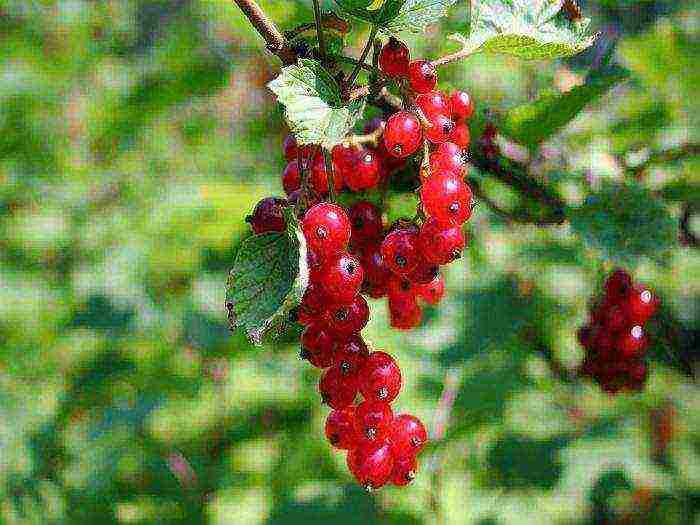
Mid-season currant variety bred by US breeders. The bush is low, spreading, the foliage density is average. The length of the fruit clusters does not exceed 7 cm, the berries have a rounded, slightly depressed shape, rather large (0.8-1.2 grams), covered with a red skin. The variety is winter-hardy, but the resistance to diseases of currants and pests is average. About 3 kg of berries can be harvested from each plant.
back to contents ↑ Fruit jelly
Representative of late-ripening large-fruited varieties of red currant. The bush is quite tall, spreading with sparse foliage. Fruit clusters of medium size (9-11 cm) form about 11 large berries, which can weigh 0.6-0.9 grams each. The shape of the fruit is oval-rounded, the skin is dense, orange-red, the berries can be on the branches of the bush for a long time without losing their taste. The variety belongs to the winter-hardy, is immune to disease, the harvest is about 6-8 kg from the bush.
back to contents ↑ Natalie
One of the best and most popular red currant varieties with an average ripening period, bred by Moscow breeders. The bush is low, slightly spreading, with dense foliage. Fruit clusters stretch up to 9 cm in length, the berries are large (0.7-1 grams), their shape is elongated, and the dense skin has a rich red color. The berries can be transported over long distances, the variety is frost-resistant and immune to diseases, the amount of harvest from each bush is about 4 kg.
back to contents ↑ Beloved
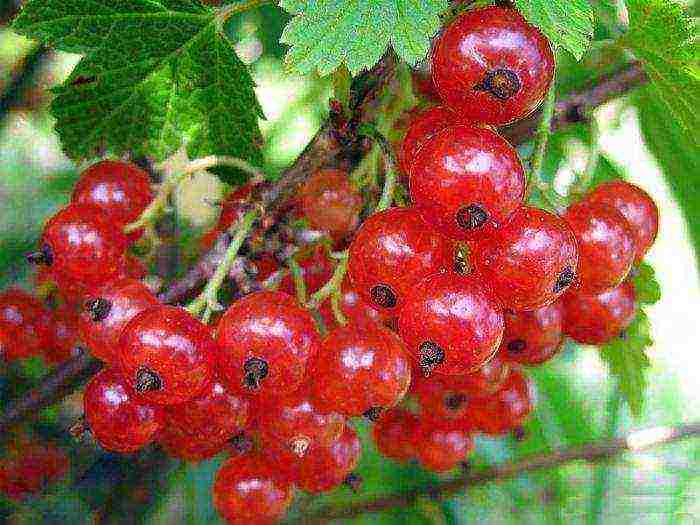
Yielding mid-season variety of Belarusian selection. The bush is medium-sized, semi-spreading, the foliage density is medium. Fruit clusters are 7-8 cm long, the berries are round in shape, their weight usually does not exceed 0.8 grams, covered with bright red skin with dark stripes. The variety tolerates wintering well, is not affected by powdery mildew, the average yield per plant is 3-3.5 kg.
back to contents ↑ Firstborn
A high-yielding variety bred by German breeders. Vigorous bush (1.4 m), slightly spreading with dense foliage. The length of the fruit cluster is 8-12 cm, about 12-16 rather large berries (0.8-1.1 grams) of rounded shape, which are covered with bright red skin, can form on it. The variety is immune to anthracnose and powdery mildew, the average bush yield is 4-7 kg, and the maximum does not exceed 12 kg.
back to contents ↑ Early sweet
A variety of red currants with early ripening of fruits. The bush is short, semi-spreading, with medium-dense foliage. Fruit clusters can reach 8-9 cm in length, berries are rounded, their weight usually does not exceed 1 gram, the skin is red in color.The variety is highly valued for its relatively high resistance to the most common currant diseases and pests, winter-hardy, usually 3-3.5 kg of berries are obtained from the plant.
back to contents ↑ Roland
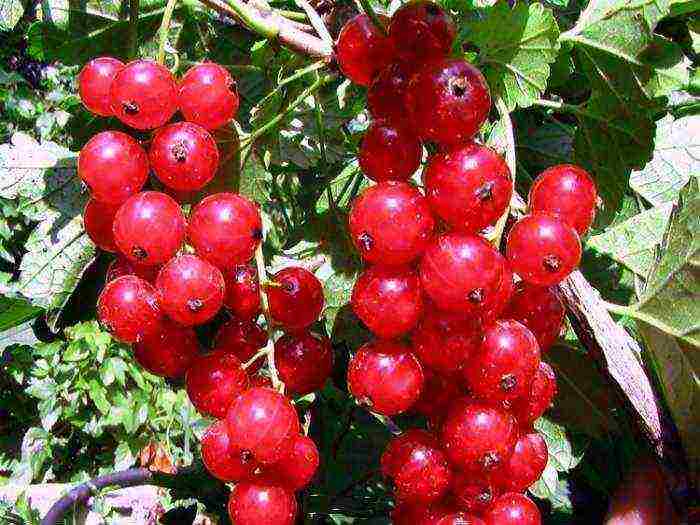
A late-ripening fruitful variety of red currant of the Dutch selection. The bush is tall, spreading. Fruit clusters reach a length of 10-12 cm, the berries are rounded, their weight ranges from 0.7-1.5 grams, the taste is sweet-sour dessert. The variety is winter-hardy and immune to pathogens of fungal diseases, practically not attacked by currant mites. The average yield of one bush is 7 kg.
back to contents ↑ Rondom
A variety with a late period of reaching biological ripeness, bred by breeders in the Netherlands. The bush is usually short, but there are strong-growing specimens with powerful shoots. The cysts are compact, long, up to 15-17 large berries of a dark red color are formed on them. They have a sweet and sour taste, they can stay on the bushes for a long time, and retain their shape well during transportation. This variety of red currants is considered one of the best yielding varieties that are grown in the Moscow region, from a bush you can get up to 8-11 kg of harvest.
back to contents ↑ Sarah
A mid-season red currant variety adapted to the climatic conditions of Siberia. The bush is tall and slightly spreading, fruit clusters reach 10-12 cm in length. The berries are round, red in color, weigh in the range of 0.9-1.8 grams, their taste is sour-sweet, have a pleasant aroma. From a single bush, about 3-4 kg of yield are obtained. The variety is not affected by anthracnose and septoria blight, it tolerates dry weather and heat almost painlessly.
back to content ↑ Sugar
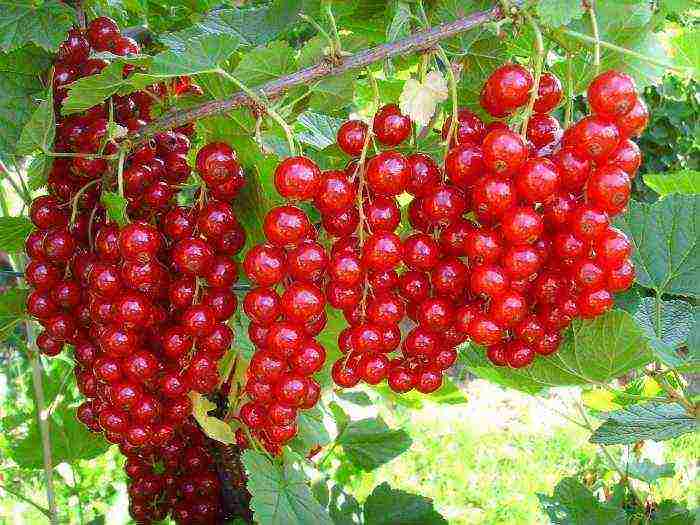
A representative of early ripening varieties of large-fruited red currant. The bush is tall (about 2 meters), slightly spreading. Fruit clusters are long (9-11 cm), up to 15 berries with a weight of 0.8-1 grams are formed on them, they have a flat-round shape, covered with a dense skin of bright red color. The fruits tolerate transportation well, the variety painlessly tolerates sudden changes in temperature, winter-hardy, immune to pests. The yield of one bush is 6-9 kg.
Back to contents ↑ Ural beauty
High-yielding mid-season variety. The bush is short, slightly spreading and has dense foliage. Fruits have a rounded shape, reaching biological ripeness, the skin becomes red. The size of the berries is quite large, their weight ranges from 0.8 to 1.7 grams, sweet in taste. This variety is valued for its winter hardiness and stable high fruiting (8-15 kg per bush), is immune to powdery mildew and is practically not attacked by fireflies and sawflies.
back to contents ↑ Filippok
A variety of Siberian selection with medium early periods of reaching the biological ripeness of berries. The bush is compact, medium-sized. The brushes are about 18 cm long, they can form up to 25 large (0.5-1.2) round-shaped berries, they are covered with red skin, and have a sour-sweet taste. The variety is moderately resistant to septoria and anthracnose and is highly regarded for its good tolerance to dry, hot weather. The yield of the bush is on average 2.5-3 kg.
back to contents ↑ Crispy
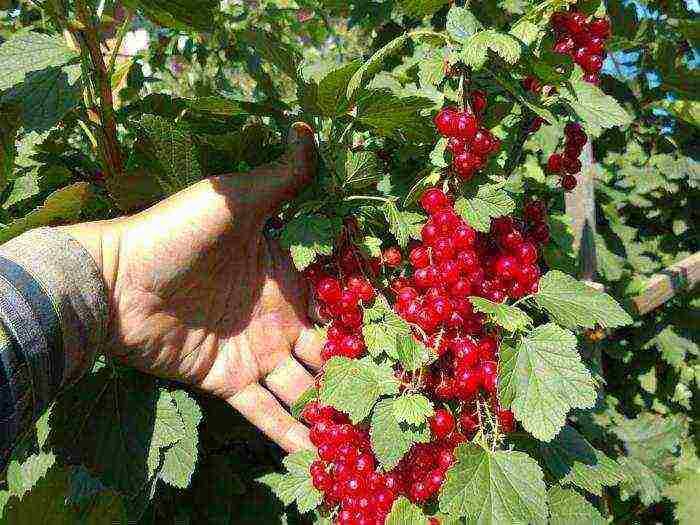
A variety of currants with mid-early ripening of berries, bred by breeders of Siberia. The bush is short, medium spreading. The length of fruit brushes reaches 8-10 cm, the shape of the berries is round, the weight does not exceed 1.3 grams, sweet in taste, the skin is red. The variety is practically immune to anthracnose and septoria, winter-hardy, usually up to 3.5 kg of yield is obtained from one bush.
back to contents ↑ Yuterborgskaya
A mid-season high-yielding variety bred by Western European breeders. Sprawling bush with dense foliage, average plant height. Fruit clusters are about 10 cm long and can contain up to 10-20 round-shaped berries, the diameter of which usually exceeds 1 cm.The fruits can be on the branches of the bush for a long period without losing their taste. From a single bush, you can get no more than 8 kg of harvest.

